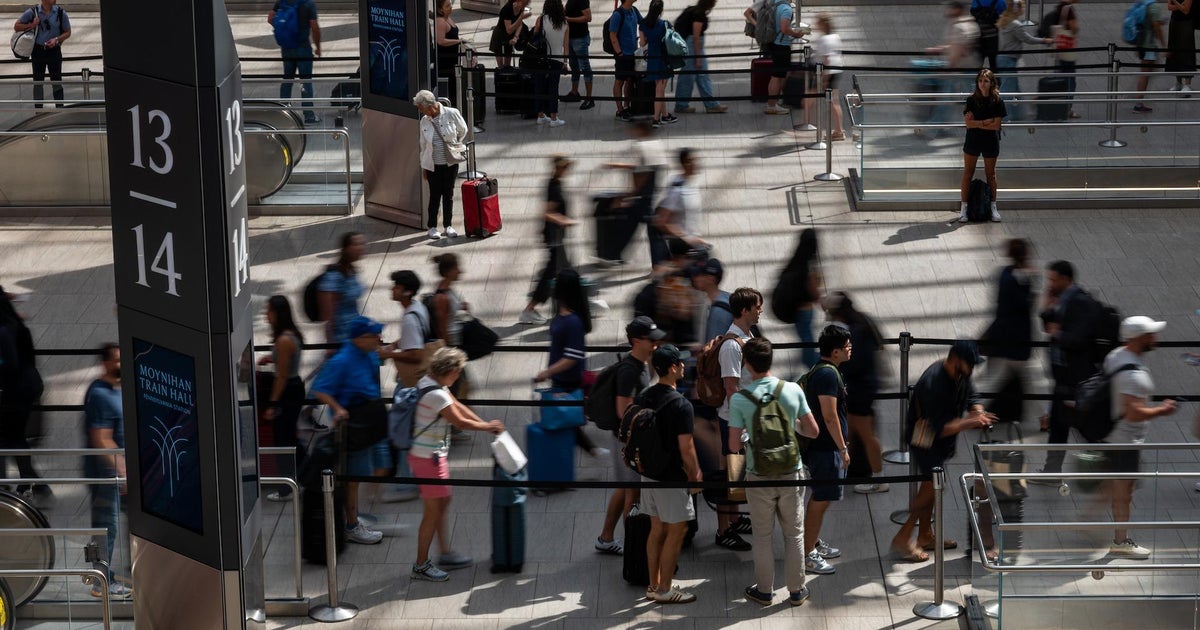A prolonged, intense heat wave threatens to wreak havoc across the western U.S. this week, bringing extreme temperatures, power outages and an increased risk of wildfires to Fourth of July celebrations.
Nearly 90 million people were under heat warnings from the National Weather Service Tuesday morning as large swaths of the south-central and western U.S. were scorched. As pressure builds in the West throughout the week, the dangerous weather is expected to continue for days with little respite.
Beginning Wednesday, parts of California will face “extreme” levels of heat risk — reaching the highest level on the National Weather Service index — that will last through Sunday or longer. In some parts of the state, life-threatening temperatures could persist for more than a week.
“This is going to be a severe, prolonged, potentially record-breaking heat wave that could have major impacts across much of California,” climate scientist Dr. Daniel Swain said during a televised discussion of the heat wave on Monday. The long duration will only add to the potential impacts and intensity, especially since little relief is expected even after the sun goes down. “It’s just not going to cool down — even at night,” he said.
While central and northern California are expected to bear the brunt of this event, areas in the southern half of the state will also see a boil. Densely populated centers and rural agricultural enclaves could see both record highs during the day and record temperatures at night.
NWS forecasters warned that multiple daily records could be broken in the San Joaquin and Sacramento valleys over the next few days. In the Central Valley, the state’s agricultural heartland, temperatures are expected to hover around 110F all week, with none dipping below 70F. Parts of Death Valley National Park could reach 127F.
But the risks aren’t limited to California. NWS extreme heat watches, warnings and advisories extend from southwestern Washington to Arizona. In Oregon, areas around the Willamette Valley and Medford will see days above 100F, and temperatures could soar to 115F.
Extreme heat is the deadliest type of weather-related disaster, and the toll is rising. Forecasters have warned that the dangerous weather this week poses health risks to most of the population, especially those without access to cooling. “These are places where it’s hot in the summer, yes, but it’s not often this hot, and certainly not for this long,” Swain said.
The extreme weather will also set the stage for new wildfires that could quickly turn into infernos. A particularly wet winter left landscapes across California blanketed in grass that dried quickly as the weather warmed. Yellowing hills and valleys are thick with fuel for fast-burning wildfires. Even deserts, normally barren this time of year, are now primed to burn. “Unfortunately, I don’t use the term ‘if wildfires start,’ because I think it’s inevitable during this event,” Swain said.
Fire risks always increase on the Fourth of July, when warm, dry weather pairs with explosive celebrations. Nationwide, an average of more than 18,500 fires are caused by Independence Day celebrations, from misguided fireworks to poorly maintained campfires. But as temperatures rise, so do the dangers. Both fire activity and fire behavior are likely to be extreme this week, and new ignitions could be difficult to contain.
“It’s going to be a challenge, day and night, so prevention is the name of the game,” said Nick Schuler, Cal Fire’s deputy director. The agency is at full capacity preparing for what’s expected to be an extremely busy week that will stretch into an extremely busy summer. California has already seen more than 131,400 acres burn, and there are still months to go before the risks peak.
“The bottom line is that 95 percent of California’s wildfires are human-caused, and most of them are preventable,” Schuler said, noting that careless grilling, a spark from a trailer chain thrown onto the road or even well-intentioned brush clearing during the hottest days can quickly turn disastrous.
But the heat this week will not only increase fire danger and intensity, it will also dry out vegetation, which could fuel future fires.
A fiery start to July is only adding to what has been an incredibly hot spring. May capped off the 12th consecutive month of record warmth around the world. The trend continued in June in many places, including parts of California, and summer is on track to be a scorcher. 2023 was declared the hottest year on record, and 2024 could quickly claim that title.
“Heat is pulling moisture out of vegetation and soil,” said Dr. Alexander Gershunov, a research meteorologist at the Scripps Institution of Oceanography. He noted that while this may be the worst heat wave to hit California this year, it certainly won’t be the last.
While individual weather events are difficult to tie to broader global warming, “heat waves are the most directly affected” by the climate crisis, Gershunov explained. Heat waves are fueled by human-caused warming and are increasing in both intensity and frequency, but they are also lasting longer and covering larger areas than before. This has only added to their potential to impact human health and put stress on systems.
“Heat waves are certainly the extreme weather conditions that are affected by the steroids of climate change,” he said, explaining that the effect is similar to that of an athlete taking performance-enhancing drugs.
The summer weather was already extreme, but it’s getting warmer.
“The trend is for more frequent, more extreme, and longer lasting heat waves around the world,” he said. “California is certainly no exception.”
More about extreme heat and wildfires in the US:







